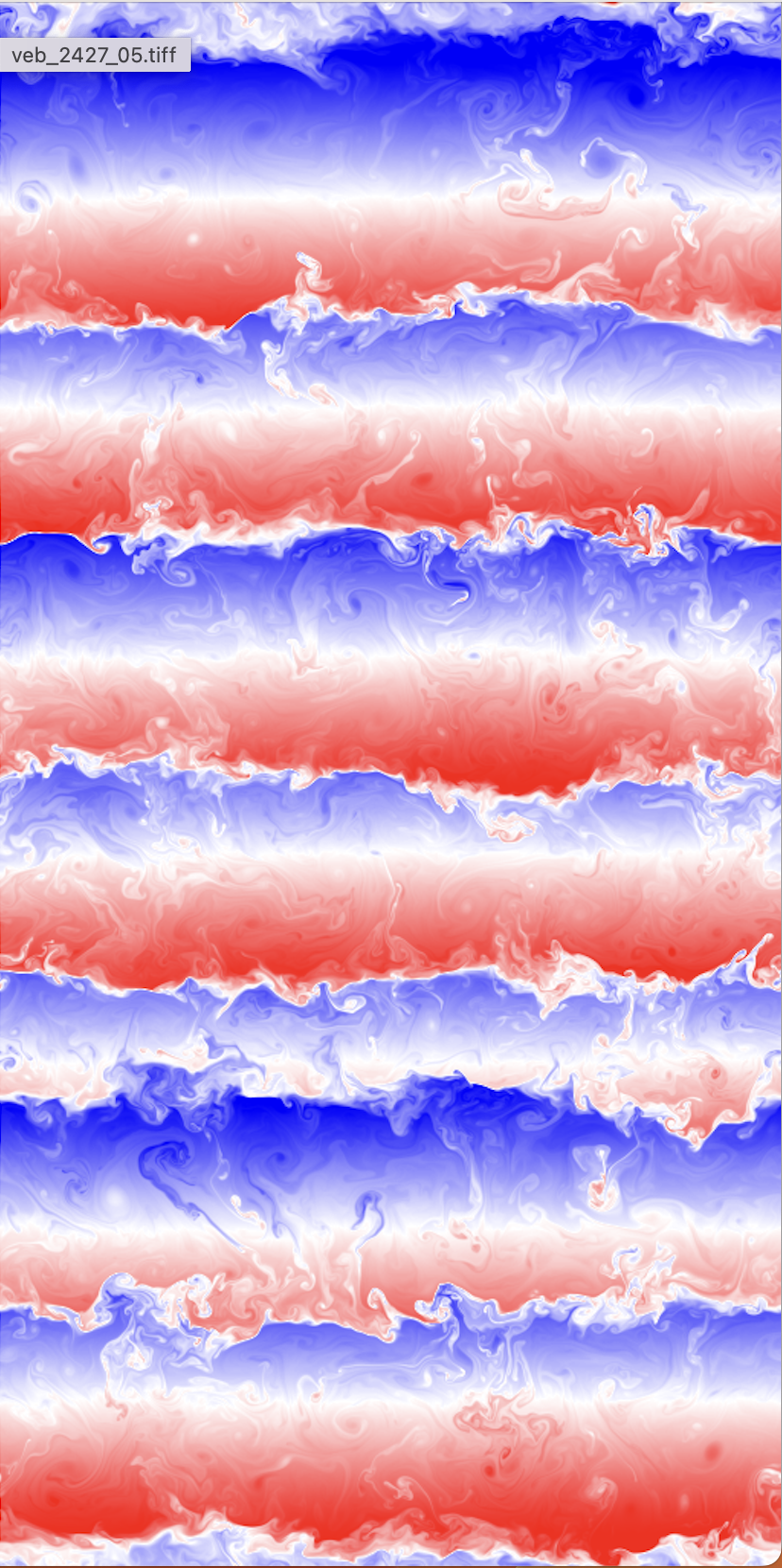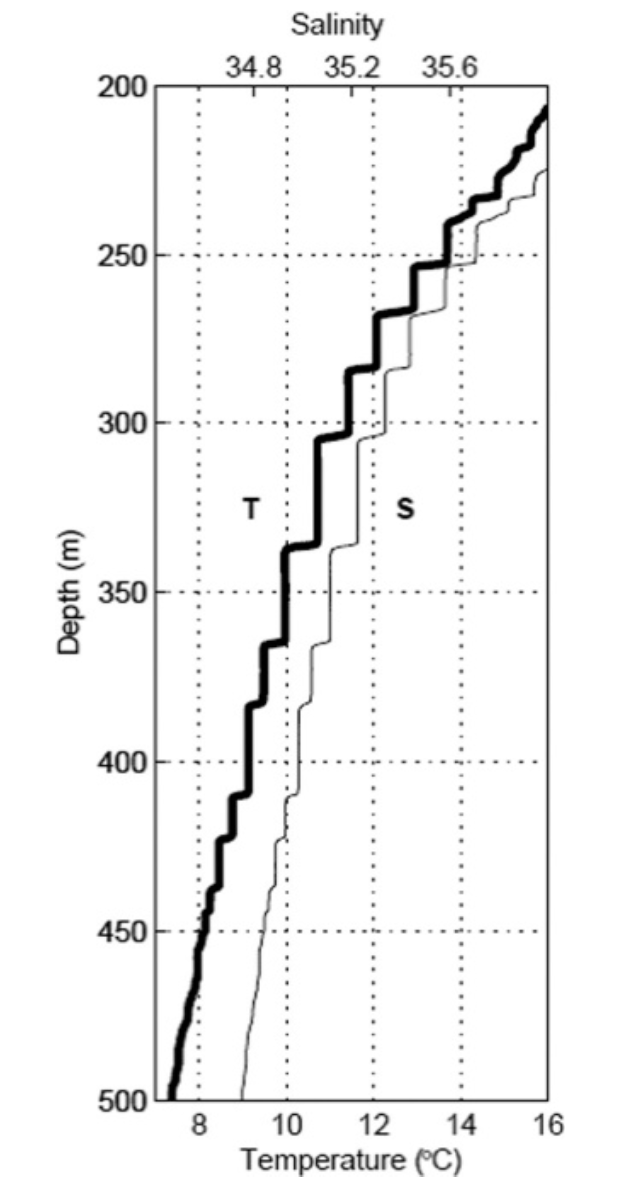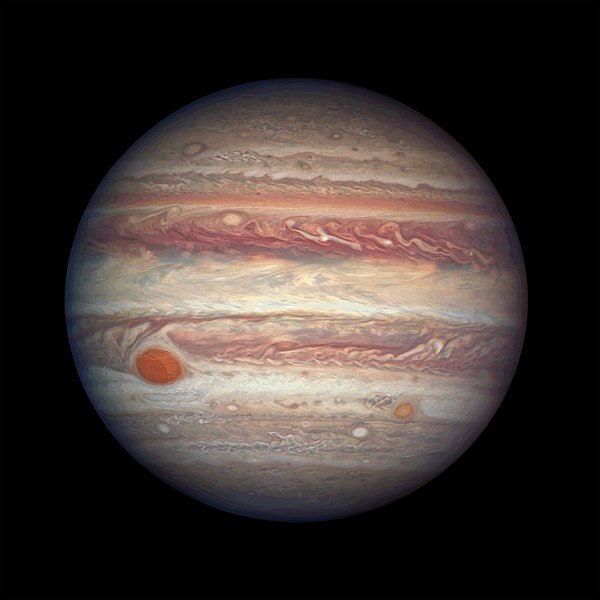Layering in Geophysical Fluid Dynamics
Background
A fascinating feature of many geophysical fluid dynamical systems is their tendency to form layers or “staircases”, in which a key physical quantity, such as the density, exhibits a staircase structure with depth. This state of inhomogeneous mixing is contrary to the naively expected limiting case of homogenisation. Understanding staircase formation is not only of intrinsic scientific interest but is vital to understanding turbulent transport. Layered and unlayered systems have very different transport properties; thus, it is essential to understand the process in order that turbulent transport can be realistically parameterised in large oceanographic or atmospheric models.
The simplest physical system in which fluid dynamical layering is observed is that of a stirred, stably stratified fluid, a system that may be responsible for certain oceanographic layering and is also readily accessible to experimental investigation. In the context of atmospheres and oceans there are two other particular systems of interest that are known to be susceptible to layering. One is double-diffusive convection, in which instabilities arise as a result of the density being dependent on two components that diffuse at very different rates; in the oceans the key quantities are heat and salt, with the diffusivity of heat being about one hundred times greater than that of salt – the process is then known as thermohaline or thermosolutal convection. Convection can then be driven either by an unstable solutal gradient with a stable thermal gradient (which occurs in warmer oceans and is known as the “fingering” regime) or, alternatively, by an unstable thermal gradient with a stable solutal gradient (the situation in colder oceans, known as the “diffusive” regime). In both these cases – which have very different instability mechanisms – the density is observed to take on a staircase structure, which appears to be remarkably resilient. The figure below shows a thermohaline staircase observed in the tropical Atlantic, which is in the fingering regime, together with a numerical simulation of double diffusive layering in the diffusive regime. Interestingly, a similar process is believed to be of importance in stellar cores, where the competing elements are heat and a compositional gradient.


Figure: Left: a thermohaline staircase (T = temperature, S = salinity), measured in the tropical Atlantic (from Schmitt et al 2005 Science, 308, 685). Right: the salinity perturbation from a numerical simulation of double-diffusive layering (Hughes & Brummell 2021 Astrophys. J., 922, 195).
The other layering process at work in the atmosphere is that of the formation of layers (staircases) in potential vorticity, which is manifested by the appearance of strong jets. This process is relevant not only for our own terrestrial atmosphere, but also for the outer layers of Jupiter’s atmosphere, which, as shown in the figure, is characterised by a strongly banded structure.

Figure: the banded structure of the jets in Jupiter’s atmosphere.
Project description
Although layering has been widely observed – in natural systems and in experiments – and has been studied in some depth, both theoretically and through computer simulations, many fundamental questions remain unanswered. For example:
- What types of stirring lead to layers?
- In double-diffusive convection, which parameter regimes lead to layering?
- What are the key differences between the layering processes in the fingering and diffusive regimes?
- What are the details of the fluid structure in the broad layers and in the narrower interfaces?
- Why is turbulent transport always enhanced in layered states?
- Are bistable states (layered and non-layered) possible?
- How important are the boundary conditions imposed on the fluid?
- What determines the rate of layer merger?
- Why are oceanographic layers so robust?
The aim of this project is to explore these questions through idealised numerical simulations, and to relate the computational results to existing reduced models of layer formation and layer merging. The project will concentrate on two-dimensional fluid flows, which are relatively easy to simulate and allow for the high resolution needed to answer some of the above questions. It will first look at the problem of forced flows in a stratified fluid, with particular emphasis on determining the properties of the forcing that do (and do not) lead to layering, and in determining the parameter regimes (in the space of Reynolds and Richardson numbers) where layering can occur. The project will then turn to the problem of thermohaline convection, exploring the details of the layering process in the very different fingering and diffusive regimes. An issue of great interest is to determine exactly what happens in the thin interfaces, and how these are connected to the fluid flow in the broader layers. All the results obtained will be analysed in terms of their relation both to oceanographic and experimental observations and also to existing reduced models of the layering process.
Potential for high impact outcome
Obtaining a full understanding of the process of layer (staircase) formation in turbulent fluid dynamical systems remains a great challenge. Although much is known about individual systems separately, either by observation, experiments or numerical simulations, a full theoretical understanding remains elusive. Thus, making progress in this area is potentially of very high impact, with implications not only for the immediate projects in oceanographic dynamics, but also in astrophysics (mixing in stellar cores and jet formation in planetary atmospheres) and plasma fusion physics (with the observation of so-called E x B staircases in fusion tokamaks). We therefore anticipate the project generating several papers suitable for submission to a high impact journal.
Training
The student will work under the supervision of David Hughes and Sam Pegler within the School of Mathematics. The student will thus be a member of the very strong astrophysical and geophysical fluid dynamics (AGFD) research group within the School. There is a weekly Fluid Dynamics/MHD seminar, and also a weekly group discussion meeting. A wide variety of courses are on offer to PhD students, provided both by the School of Mathematics and the faculty. These range from level 5 (Masters level) courses, to specialised computational training, through to training in more general aspects of the PhD, such as managing your degree and preparing for your viva. Through the project, the student will be trained not only to tackle the particular problem at hand, but will also acquire valuable analytical and computational skills.
Student profile
The project will involve the study of fluid dynamical systems through the solution of nonlinear partial differential equations. The student should have a strong background in either applied mathematics or physics, certainly with some knowledge of, and interest in, fluid dynamics. Some background in computation would also be helpful. Some background in mathematical methods, particularly asymptotic methods and PDEs, and some knowledge of computational techniques for solving differential equations, would also be helpful.
